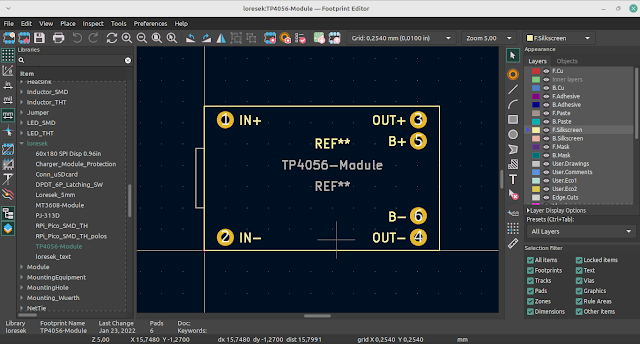KiCAD Projects: Icosahedron d20 (2,400 LED, 20-Sided) by Greg Davill
Behind The Project
The LED panels, in Greg Davill opinion, provide the main difficulty in producing a smaller LED cube. Commercially available panels are created at a minimum size of 64x64 pixels and are intended for video walls. This seems to be a fair balance between price, complexity, and light output. Because Greg Davill had created and constructed his own unique, high-density* LED panels for previous project, the mini-led-cube, Greg Davill had successfully addressed one of the main challenges of making a smaller cube.
(*high density: pixel pitch less than 2.5 mm)
Then what? Greg Davill could reduce its size, enhance the firmware, and enhance the controller. How about adding additional sides?
This origami figure that Greg Davill had made many years earlier and had been sitting on his shelf served as source of inspiration.
Until now, Greg Davill had never seen an LED icosahedron.
Design decisions
Greg Davill began by considering the project's main components from a high-level perspective. What he knew he wanted in terms of design and what he still needed to figure out Engineering projects are inherently problem-solving endeavors, so having a thorough understanding of the issues you'll be facing will be helpful.
Panels
- Greg Davill would have to create a tiny LED panel that housed all the components.
- This panel would feature an easy way to link it to other panels to make a chain, and it would be shaped like an equilateral triangle.
- How should the LEDs be arranged on each panel's surface to facilitate routing? Knowing that the panels were at varying angles, He wanted them to line up regardless of the direction in which they were installed. the symmetry of 120 degrees.
Enclosure
- How will the panels be connected with such a little bezel?
- Given the numerous odd angles in this container, 3D printing is the obvious solution.
- Probably a resin or nylon-based 3D printing service
- Due to personal experiences with resin becoming brittle and discolored over time, the resin is not recommended.
- To make the case less obvious, choose a black material.
- overall size as a whole Using a tennis ball or Rubik's cube that is the same size as the cube.
Controller
- Although the controller design for the cube can be used, it must be modified to accommodate the smaller form factor.
Power
- How is this going to be powered? RC hobby LiPo cells, 18650?
- Need something a little friendlier looking if we want to take this on an aircraft.
Panel r0.1
LEDs were positioned at 90 degrees in an attempt to create a board, but this finally failed. The pads appear to be roughly symmetrical, but they aren't. As a result, there isn't much surface tension during reflow to pull the LEDs into alignment when they are positioned at 90 degrees. Yes, the alignment is somewhat undesirable.
It's also important to note that he didn't even try to turn this on because he didn't have the FFC cables or connectors at this point, and he hadn't created the code to drive the display. Perhaps the foreshadowing is apparent in this assessment.
Enclosure
Now that the design for the panels is complete, Greg Davill can export a 3D model from KiCad and begin examining how they will be merged into an enclosure. An unusual LED had to be modeled by him. Seeing how everything will fit was incredibly helpful.
Downloads
If you want to make one of these for yourself because you're feeling daring, I'd love to see it! You may just look at the design files.
Here is a repository with hardware designs for PCBs and 3D printable files: https://github.com/gregdavill/d20-hardware
The device's running proof of concept firmware was created in rust and is available here. (now incorporated into an altered said crate to which I've added DMA support) https://github.com/gregdavill/atsamd/tree/d20-controller
The RGB panel code from Sylvian "TNT" Munant served as the foundation for the gate-ware for the ice40, which was slightly updated to support the special shift register design of my panels: https://github.com/gregdavill/ice40-playground















